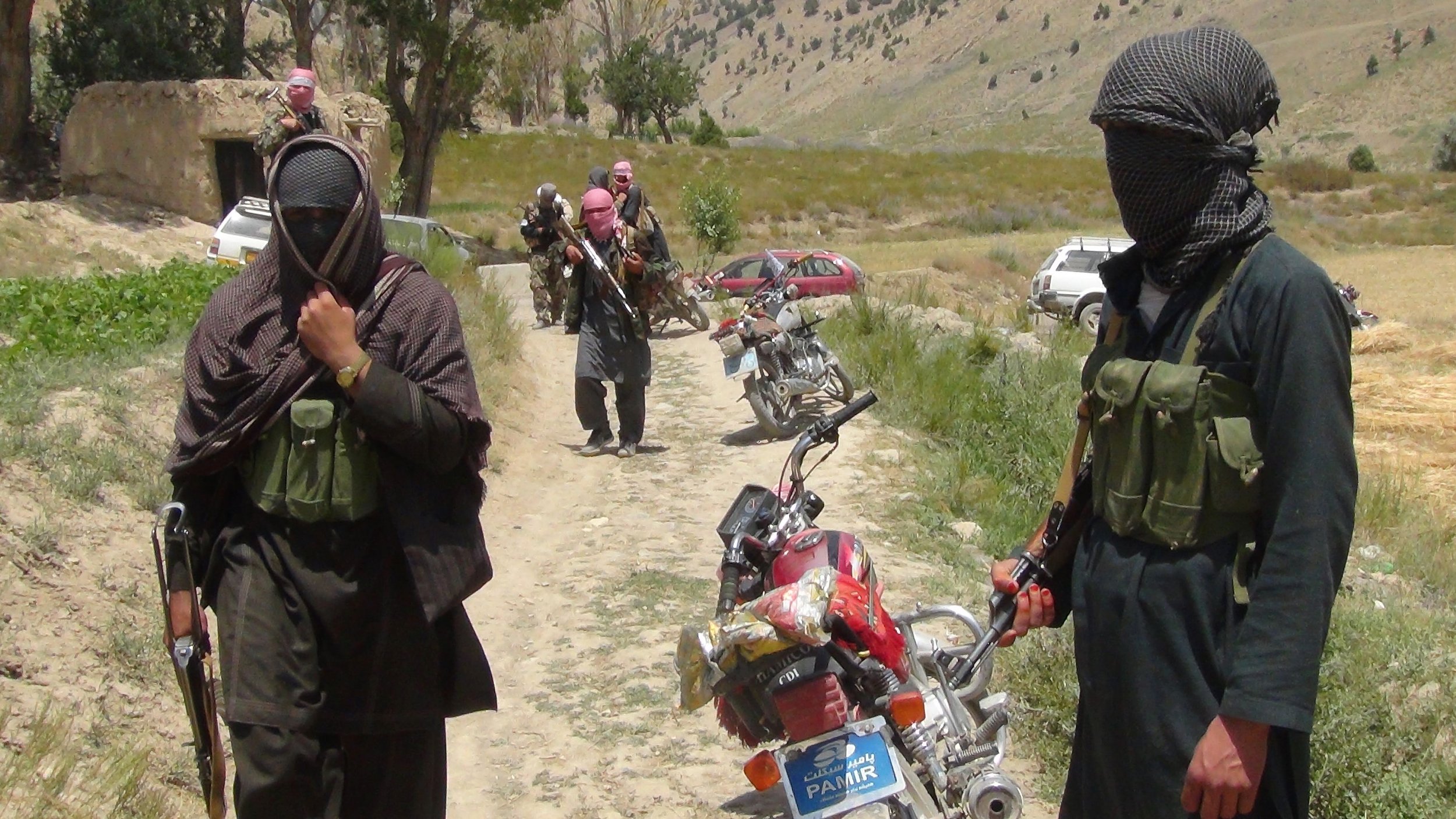
It was called the "Caravan of Heroes." The video opens with the silhouettes of commandos—guns cocked—appearing over a hill, a sunrise in the background. They could have been American or British special forces, but they were from another group: the Taliban.
The fighters, dressed in black camo slacks, are shown ambushing a checkpoint using military-style tactics and automatic weapons.
It appeared to mimic U.S. special forces and is the result of the Taliban creating their own elite division, one acknowledged by Afghan officials: the "Red Unit."
The unit cannot be compared to Britain's elite SAS or American Marines, but officials have reported that there are as many as 300 fighters involved in what is known in Pashto as the Sara Khitta, and they have proved effective.
Deep in Helmand province, a hub of the militant group's yearslong insurgency against Afghan and Western forces, the Taliban's elite fighters have been conducting surprise attacks against Afghan forces using what officials say are Russian-made night-vision goggles.
Earlier this month, Taliban militants killed eight Afghan police officers by using the goggles to sneak up on them as they slept in their beds in the village of Pule Regi, located near the Afghan city of Farah.
"Night-vision equipment is used in ambushes by the insurgents, and it is very effective," Major General Dawlat Waziri, the spokesman for the Afghan Defense Ministry, told The New York Times. "You can see your enemy, but they cannot see you coming."
Afghan officials said that the goggles may have been purchased on the black market in neighboring Pakistan, where the Afghan Taliban has links with its Tehreek-e-Taliban counterparts. They also could have been captured from killed Afghan soldiers on the battlefield.
The Pentagon and NATO's Resolute Support Mission had not responded to a request for comment.
The group has also promoted the unit elsewhere in the country, publishing images of its soldiers in the eastern province of Laghman, and initially being deployed to the province of Sangin.
In 2015, it released images of its fighters taking part in physical exercises and weapons training, in what appeared to be drills specifically created for an elite unit.
An Afghan special forces commander told Reuters in August 2016 that the unit now has "advanced weaponry, including night vision scopes, 82 mm rockets, heavy machine guns and U.S.-made assault rifles." So the unit appears to be using technology cultivated by two of its main historical rivals in Washington and Moscow.
But it is not only launching attacks against Afghan forces. It is also taking on its main radical Islamist rival in the country, the Islamic State militant group.
The Taliban have long been the predominant militant group in Afghanistan, but their leadership of jihad in the country has been severely challenged by ISIS in recent years. The ISIS ranks in Afghanistan are not only filled with Afghans and locals, but foreign fighters, jihadis who are changing the landscape of the Afghan battlefield.

The militant group has established an affiliate on the Afghan-Pakistan border known as the Khorasan Province. It is a reference to an ancient region set along the modern Afghan-Pakistan border. It is one of more than a dozen affiliate branches of ISIS around the world. Its main presence in Afghanistan is in the eastern province of Nangahar.
The development of a Taliban special forces unit appears to be not only directed at improved combat skills for use against Kabul, but ISIS too. The growing infighting between the jihadi groups in the country has given rise to defections, betrayals and executions of their own fighters.
Six months ago, senior Taliban leader Qari Hemkat switched sides to ISIS, raising the group's black flag in two districts of Jawzjan province. His followers started to enslave women and even created a bomb-making school for children. ISIS has also claimed more than a dozen bombings in Afghanistan this year, including large-scale attacks in Kabul that have left scores dead.
It remains unclear how close the ties between ISIS-affiliated jihadis in Afghanistan and its leadership in Syria and Iraq are, but the Taliban are anxious that they are being challenged by a more brutal and potentially attractive militant group for its fighters and possible Afghan recruits.
So Afghan security services are facing multiple challenges after the withdrawal of the majority of Western forces from the country in 2015 following years of assistance in its battle against a Taliban insurgency since 2001.
With the onset of the Taliban's elite fighting force, and an ever-growing ISIS presence in the country, President Donald Trump's decision to expand the American troop presence to 14,000 in the hotbed of jihadism is a welcome one for Kabul.
Uncommon Knowledge
Newsweek is committed to challenging conventional wisdom and finding connections in the search for common ground.
Newsweek is committed to challenging conventional wisdom and finding connections in the search for common ground.
About the writer
Jack is International Security and Terrorism Correspondent for Newsweek.
Email: j.moore@newsweek.com
Encrypted email: jfxm@protonmail.com
Available on Whatsapp, Signal, Wickr, Telegram, Viber.
Twitter: @JFXM
Instagram: Read more
To read how Newsweek uses AI as a newsroom tool, Click here.








